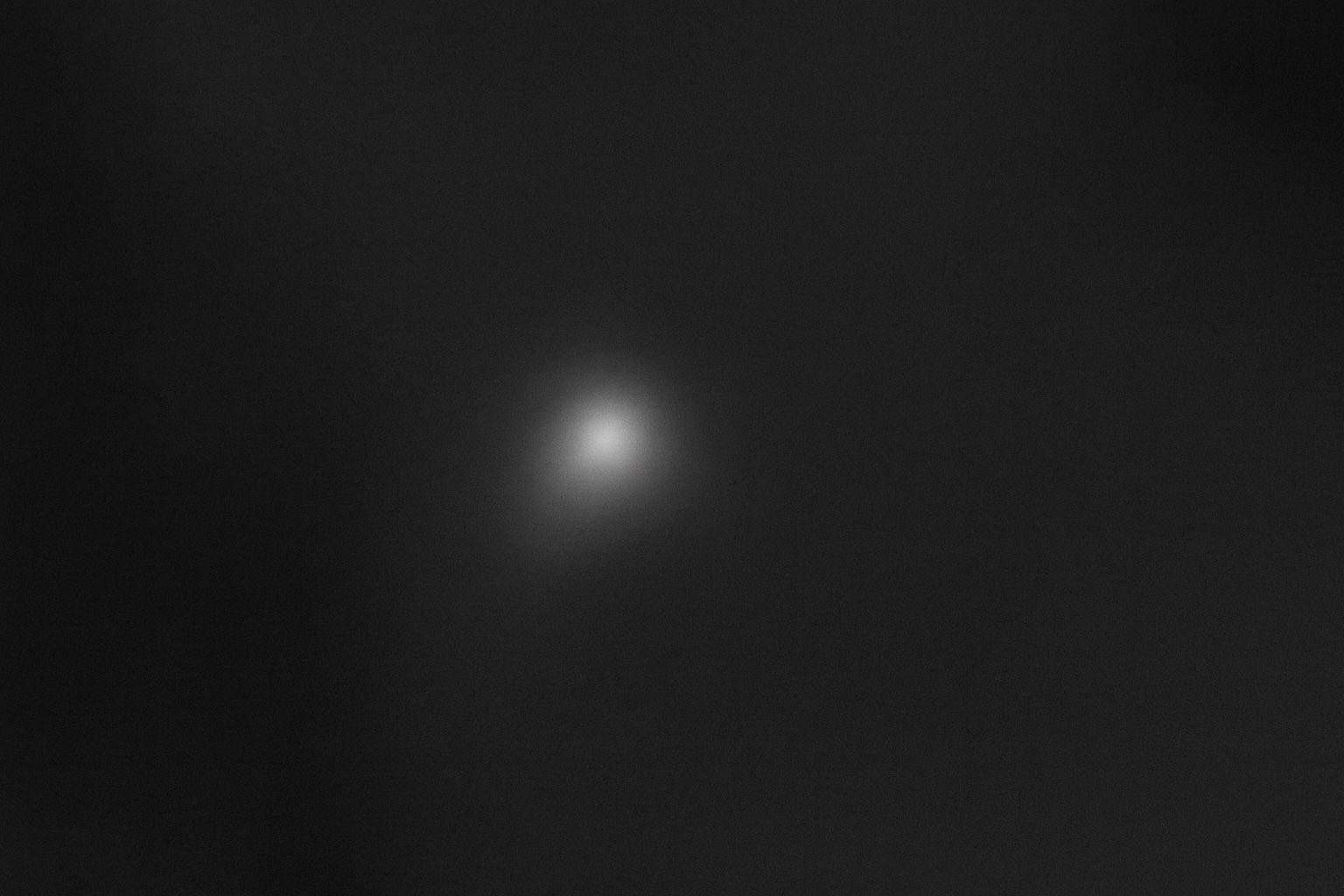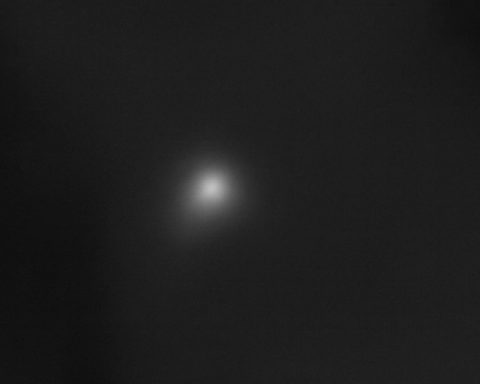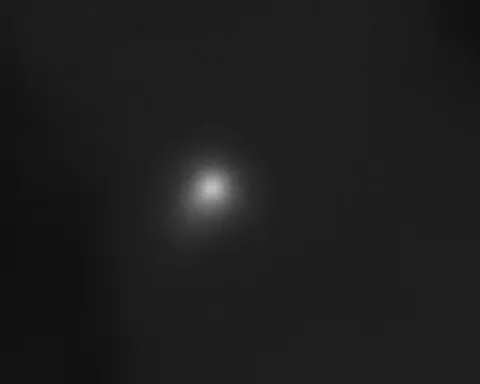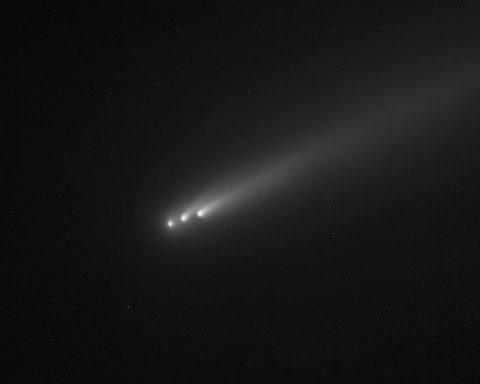On November 24, 2025, interstellar comet 3I/ATLAS is at the center of a perfect storm of hard science, viral clips and wild alien speculation – while a second “ATLAS” comet in our own solar system has literally started to fall to pieces.
1. Quick summary of today’s 3I/ATLAS & ATLAS comet headlines
Here’s what broke (or was updated) on 24 November 2025:
- NASA’s Mars images go public – Universe Today reports NASA has finally released long‑awaited images of 3I/ATLAS from Mars orbit and the Perseverance rover, after a US government shutdown delayed the data. These show the comet’s coma and hydrogen cloud in detail and will help refine its size and composition. [1]
- “Unprecedented jets” and energy puzzle – A new forensic image analysis from USA Herald highlights multiple tightly collimated jets, including sun‑facing “anti‑tails”, and argues that the observed mass loss looks extreme for a natural comet, keeping debate about 3I/ATLAS’ physics very much alive. [2]
- Spin and “moving” comet videos go viral – The Economic Times and Times of India both run explainers on social‑media footage that appears to show 3I/ATLAS spinning or surrounded by dust rings. Scientists stress these effects are unverified and may be imaging artefacts; agencies are waiting for high‑resolution follow‑up. [3]
- Fresh “alien mothership” headlines – A new Medium essay by Harvard astrophysicist Avi Loeb lists a dozen “anomalies” of 3I/ATLAS and assigns tiny probabilities to each, while the Daily Express amplifies this as evidence of a “precisely‑tuned trajectory” to Jupiter’s gravitational sphere, suggesting a possible alien craft. [4]
- Mainstream verdict still stands: it’s a comet – NASA’s Nov. 19 press conference and subsequent coverage in outlets like WIRED and Live Science insist the data point to a natural interstellar comet, not technology, and that the object poses no threat to Earth. [5]
- Radio “signal” from the comet explained – A separate Live Science piece, published earlier this month and widely recirculated, confirms that radio emissions detected by South Africa’s MeerKAT telescope come from hydroxyl radicals produced by outgassing water, not any artificial transmitter. [6]
- The other ATLAS comet is breaking apart – New coverage today from India Today shows Comet ATLAS C/2025 K1 splitting into at least three bright fragments after its close solar pass, following earlier reports that this different ATLAS comet had turned a strange gold color. [7]
Let’s unpack what all of that actually means.
2. What is 3I/ATLAS – and where is it today?
3I/ATLAS, also catalogued as C/2025 N1 (ATLAS), is only the third confirmed interstellar object ever seen passing through our solar system, after 1I/ʻOumuamua and 2I/Borisov. It was discovered on 1 July 2025 by the NASA‑funded ATLAS survey telescope in Chile. [8]
Key facts as of 24 November 2025:
- It follows a hyperbolic orbit, meaning it’s not bound to the Sun and will never come back once it leaves. [9]
- It passed its closest point to the Sun (perihelion) on 29 October 2025, at about 1.36 AU (just inside Mars’ orbit). [10]
- Today, ephemeris data from TheSkyLive put 3I/ATLAS in the constellation Virgo, about 1.99 AU (≈297 million km) from Earth, with an observed magnitude around 10.2 – far too faint for the naked eye, but accessible in medium‑sized telescopes under dark skies. [11]
- Its closest approach to Earth will occur on 19 December 2025, at roughly 1.8–2 AU (about 267–270 million km), a completely safe distance. [12]
- Spectroscopic studies suggest the nucleus is a few hundred meters to a few kilometers across, unusually rich in carbon dioxide, with relatively little water compared with typical solar‑system comets. [13]
So despite the dramatic headlines, this is a distant, faint, non‑threatening visitor, currently best seen in the pre‑dawn sky with proper equipment.
3. NASA’s Mars images finally drop
Today’s biggest substantive science development is the wide circulation of NASA’s Mars‑based images, highlighted by Universe Today and backed by NASA’s own “multiple lenses” campaign. [14]
What the Mars fleet saw
As 3I/ATLAS skimmed past Mars in early October – coming within about 19–30 million miles (30–48 million km) – NASA spacecraft seized the opportunity:
- Mars Reconnaissance Orbiter (MRO) rotated its HiRISE camera off Mars and captured one of the closest visible‑light images of the comet, revealing a compact coma roughly 1,500 km across. [15]
- MAVEN used its Imaging Ultraviolet Spectrograph to map hydrogen around the comet, separating it from hydrogen in Mars’ atmosphere and the interplanetary medium. This helps constrain the comet’s water production rate and hydrogen‑to‑deuterium ratio, key clues to its origin. [16]
- Perseverance rover on the Martian surface even snuck a long‑exposure shot from Jezero Crater, catching 3I/ATLAS as a faint smudge tracking across a star‑streaked sky. [17]
NASA has also turned a whole fleet of spacecraft – STEREO, SOHO, PUNCH, Lucy, Psyche and others – toward 3I/ATLAS, stacking images to tease out its tail and coma as it passed behind the Sun from Earth’s point of view. [18]
NASA’s official verdict
After weeks of silence caused by the federal shutdown, NASA scientists used a Nov. 19 press event and subsequent media briefings to make their position explicit:
3I/ATLAS is a comet, not an alien spacecraft, and it poses no danger to Earth.
Multi‑wavelength data – from ultraviolet hydrogen signatures, visible‑light coma imaging and dust tails to radio detections tied to water breakdown – all point to classic cometary outgassing from an interstellar object that formed in a very cold, distant star system perhaps up to 7 billion years ago. [19]
That doesn’t mean it’s boring. It means the weirdness has to be understood within comet physics rather than by jumping first to alien technology.
4. Jets, anti‑tails and an “energy budget” headache
A new piece today in the USA Herald – building on imagery from French astronomer François Kugel – focuses on the comet’s jet structure after perihelion. [20]
From a stacked set of 22 x 30‑second exposures taken on 17 November 2025, astronomers see:
- A bright, nearly stellar nucleus surrounded by a compact coma.
- Multiple narrow jets firing in different directions, including two “anti‑tail” jets pointing toward the Sun, and a long, collimated jet extending away from it.
- Sunward jets visible out to about 1 million km, and the main tail jet stretching close to 3 million km. [21]
The article highlights three “immediate‑attention” puzzles:
- Brightness paradox – At ~1.4 AU from the Sun and ~2.2 AU from Earth at that time, the nucleus appears unusually bright, suggesting either very reflective material or extremely efficient energy conversion in the jets. [22]
- Jet geometry – The jets are tightly collimated, not the broad, fuzzy plumes typical of naturally venting comets, and the classic dust tail is surprisingly dim or hard to see. [23]
- Energy and mass‑loss math – The implied mass‑loss rate is estimated at roughly 50 billion tons per month, comparable to some estimates of the comet’s minimum mass. Yet images before and after perihelion show no catastrophic breakup, suggesting either our assumptions are wrong or some additional physics is in play. [24]
Mainstream researchers are exploring natural explanations, including:
- An unusually CO₂‑rich, water‑poor composition, which can drive powerful gas jets without producing as much classic dusty tail material. [25]
- Viewing geometry that may cause us to see part of the tail head‑on. [26]
- Complex grain sizes and electric‑ or magnetic‑field effects in the coma.
But the same features are also fueling more speculative ideas – especially from one very vocal scientist.
5. Loeb’s new “anomalies” list – and the alien mothership narrative
Today Avi Loeb published “Anomalies of 3I/ATLAS, Organized by Likelihood” on Medium, immediately picked up by tabloids like the Daily Express. [27]
His essay enumerates 12 claimed anomalies and attaches very small probabilities to each, including:
- The predicted closest approach to Jupiter on 16 March 2026 landing almost exactly at Jupiter’s Hill sphere radius, which he interprets as suggestive of a deliberate trajectory, possibly to release devices into Jovian orbit. [28]
- The comet’s mass being orders of magnitude larger than earlier interstellar visitors yet arriving on a finely tuned path through the inner solar system. [29]
- Persistent sunward jets (anti‑tails) that, he argues, are unlikely to be geometric illusions and might be akin to a defensive beam or thrust plume. [30]
- An unusual nickel‑to‑iron ratio and low water fraction in the gas plume, which he suggests could resemble engineered alloys or surface layers rather than primordial ices. [31]
Loeb doesn’t claim proof, but he openly entertains the idea that 3I/ATLAS could be a technological object – a “mothership” performing maneuvers and perhaps deploying smaller craft near Jupiter.
The Daily Express takes the most sensational angle today, describing 3I/ATLAS as “confirmed as ‘alien spaceship’” by its precisely tuned approach to Jupiter’s Hill radius and summarizing Loeb’s points as evidence of an “alien mothership” on a planned mission. [32]
How does this square with mainstream science?
So far, the overwhelming scientific consensus remains:
- 3I/ATLAS behaves like a very unusual, heavily processed interstellar comet – not like a piece of functioning hardware.
- Its radio emissions are fully explained by hydroxyl radical transitions from water broken apart by sunlight, exactly what you’d expect from a comet near perihelion. [33]
- Features like high CO₂ content, color changes, and anti‑tails already have plausible natural models, even if the details are still being worked out. [34]
Loeb’s arguments are part of a broader technosignature discussion – not accepted evidence that aliens are here – and agencies like NASA explicitly reiterated on Nov. 19 that no data currently indicate an artificial origin. [35]
6. Viral “spin” videos: is 3I/ATLAS really rotating strangely?
Two major outlets today, The Economic Times and The Times of India, dive into the viral social‑media clips that claim to show 3I/ATLAS “moving” or spinning. [36]
What the footage seems to show:
- Stacked images and time‑lapse videos where the inner coma changes shape, forming circular patterns or ring‑like shells.
- Some users claim to see five objects circling a central point, or a series of dust rings expanding outward up to ~150,000 km. [37]
- Posts attribute the clips to astrophotographers (for example “Ray’s Astrophotography”) and compare them with ESA’s ExoMars Orbiter imagery.
But both articles emphasize key caveats:
- None of these rotational claims have been verified by NASA or ESA.
- The apparent motion could come from imaging artefacts, stacked‑frame processing, changing jet brightness, or changing viewing geometry, not literal solid‑body rotation. [38]
- 3I/ATLAS does rotate – most estimates put its period at around 16 hours, based on brightness variations – but mapping that rotation onto specific coma patterns is non‑trivial. [39]
Both outlets conclude that we need high‑resolution, time‑resolved images from professional facilities and spacecraft before treating any of the viral “spin” videos as real evidence of unusual dynamics.
7. The other ATLAS comet: C/2025 K1 is literally crumbling
While 3I/ATLAS grabs the alien headlines, a completely different comet, also discovered by ATLAS, is having a very real and very dramatic breakup.
C/2025 K1 (ATLAS): gold then shattered
- C/2025 K1 (ATLAS) was discovered in May 2025 by the ATLAS system and is a standard Oort Cloud comet, not an interstellar object. [40]
- It passed just 31 million miles (50 million km) from the Sun on 8 October 2025, surviving a close brush many thought might destroy it.
- Afterwards, it surprised observers by turning a striking golden‑reddish color, likely because its coma was unusually poor in typical carbon‑bearing molecules (like dicarbon and cyanide) that usually give comets green or blue hues. [41]
In the last week, new imagery from professional observatories and astrophotographers – highlighted by Live Science and others – showed that C/2025 K1 had begun to fragment, with multiple bright pieces and debris clouds. [42]
Today, India Today reports that the comet has broken into at least three bright fragments, with a trailing plume of dust, ahead of its closest approach to Earth on 25 November 2025 (~37 million miles away). [43]
This “other ATLAS” comet:
- Is not related to 3I/ATLAS except by the fact that both were discovered by ATLAS telescopes. [44]
- Is much closer to Earth and visually brighter, but still faint to the naked eye.
- Provides a textbook example of a comet that really is tearing itself apart under solar and tidal stresses – in contrast to 3I/ATLAS, which is still intact despite rumors of explosions. [45]
For observers and headline‑writers alike, keeping 3I/ATLAS (C/2025 N1) and C/2025 K1 (ATLAS) distinct is crucial.
8. How and when you can actually see these comets
If you’re hoping to spot either comet yourself, here’s the practical side.
3I/ATLAS (C/2025 N1)
According to today’s ephemerides: [46]
- Constellation: Virgo
- Brightness: about magnitude 10.2
- Distance from Earth: ~1.99 AU (~297 million km)
- Visibility:
- Best seen in the pre‑dawn sky, low in the east or southeast, depending on your latitude.
- Requires at least a moderate telescope (>15–20 cm / 6–8″ aperture) under dark skies; it will appear as a faint fuzzy patch rather than a bright “Hollywood” comet.
Always consult a local sky chart or an app that incorporates up‑to‑date orbital elements, as visibility depends strongly on your location and light pollution.
C/2025 K1 (ATLAS)
From Live Science and observing guides: [47]
- Constellation: currently between Leo and Virgo.
- Brightness: around magnitude 9–10, though fragmentation may change this quickly.
- Closest approach: 25 November 2025, at about 37 million miles (~60 million km) from Earth – still safe, but much closer than 3I/ATLAS.
- Appearance: now a multi‑component object with a fan of debris; a fascinating photographic target for experienced imagers with tracking mounts.
9. What to watch for next
Over the coming weeks, expect:
- More NASA & ESA imagery – additional processed data from Mars orbiters, heliophysics missions and deep‑space probes will refine 3I/ATLAS’ jet structure, rotation and composition. [48]
- Closer Earth flyby on 19 December – still far away, but the changing viewing geometry may make its tail and jets easier to interpret from ground‑based observatories. [49]
- Jupiter encounter in March 2026 – the point that underpins many of Loeb’s trajectory arguments. Planetary dynamicists will watch this carefully, but as of today, there’s no evidence of any deliberate maneuvering. [50]
- Better modeling of “anomalies” – papers are already in the works explaining the CO₂ dominance, color changes, anti‑tail geometry and radio emissions in purely natural terms, as happened previously for ‘Oumuamua’s odd behavior. [51]
For now, the most balanced reading of today’s news is:
3I/ATLAS is a scientifically extraordinary, interstellar comet with some very weird but likely natural behavior – and it’s being studied more intensely than any comet in history.
If you’re following this story on Google News or Discover, it’s worth prioritizing outlets that clearly distinguish between measurement and speculation, especially when it comes to claims about alien technology.
References
1. www.universetoday.com, 2. usaherald.com, 3. m.economictimes.com, 4. avi-loeb.medium.com, 5. www.wired.com, 6. www.livescience.com, 7. www.indiatoday.in, 8. en.wikipedia.org, 9. en.wikipedia.org, 10. en.wikipedia.org, 11. theskylive.com, 12. www.universetoday.com, 13. en.wikipedia.org, 14. www.universetoday.com, 15. www.universetoday.com, 16. www.universetoday.com, 17. www.universetoday.com, 18. science.nasa.gov, 19. www.wired.com, 20. usaherald.com, 21. usaherald.com, 22. usaherald.com, 23. usaherald.com, 24. usaherald.com, 25. en.wikipedia.org, 26. usaherald.com, 27. avi-loeb.medium.com, 28. avi-loeb.medium.com, 29. avi-loeb.medium.com, 30. avi-loeb.medium.com, 31. avi-loeb.medium.com, 32. www.the-express.com, 33. www.livescience.com, 34. www.livescience.com, 35. www.wired.com, 36. m.economictimes.com, 37. timesofindia.indiatimes.com, 38. timesofindia.indiatimes.com, 39. en.wikipedia.org, 40. www.livescience.com, 41. www.livescience.com, 42. www.livescience.com, 43. www.indiatoday.in, 44. www.livescience.com, 45. www.livescience.com, 46. theskylive.com, 47. www.livescience.com, 48. science.nasa.gov, 49. www.universetoday.com, 50. avi-loeb.medium.com, 51. www.livescience.com










